Kader Attia
“After many years of research in Africa, from Algiers to Kinshasa, where I have lived, I have developed the concept of “cultural reappropriation” – a logical continuity of the endless mixing process that cultural signs generate together. Like any kind of animal or vegetal organism, all human culture needs to reinvent itself in order to evolve and then to adapt and survive in new environments. But the ground that resurrects this growing reappropriation is an ambivalent phenomenon: “la réparation” / repair.
Ancient societies from Africa to Japan repair while leaving the wound still visible: with kintsugi, for example, which consists in painting in gold the repaired crack in a ceramic object. Many African objects originating from the era of Colonialism include traces of the oppressing power, such as European money or fabric, that were used to decorate and to repair, as a creative act of cultural reappropriation. The modern West, on the contrary, has always been aiming at to return to the original state of a wounded thing.
Our contemporary world is haunted by wounds from the past. Traumas resulting from the worst moments in history such as wars, famines, and genocides have left lasting material and immaterial scars which, like a phantom limb of an amputated part of the body, are still there. They demand reparation, and the permanent proximity to the world of the dead requires us to listen to their calls. By extending to the human psyche the body of my political research on the concept of repair I fathomed the importance of the immaterial character of wounds. Mass traumas and injustices or those of simple individuals last far longer than the initial act; they persist like a phantom limb of an amputated part of the body, and they demand reparation. Keeping the wounds visible is to accept the real. So I undertook to repair these wounds by pursuing what my research taught me was fundamental—that repair is an oxymoron that also includes the wound: to deny it is to maintain it. By repairing cracks that history has left with metal staples, with yarn or with patches from other, often opposed cultures, I give voice to the victims, I allow trauma to speak to us and thus path the way for Katharsis.
The History of thinking on power, the inheritor of slavery, of colonisation, and of genocides, writes tirelessly a hegemonic, universalist story, and denies by its certitude that of the phantoms of wounds that it generated, and which ceaselessly grow, despite the distance in time from the trauma. Like a phantom limb, these wounds are there and the works are a means to recall the necessity of their reparation even when they are irreparable.”
Kader Attia, 2018
Texts
• Kader Attia and Marion von Osten – Interview
• “Scarification, the self-skin architectur”
• “The Field Of Emotion” by Kader Attia
• “The Loop or the Vortex” by Kader Attia
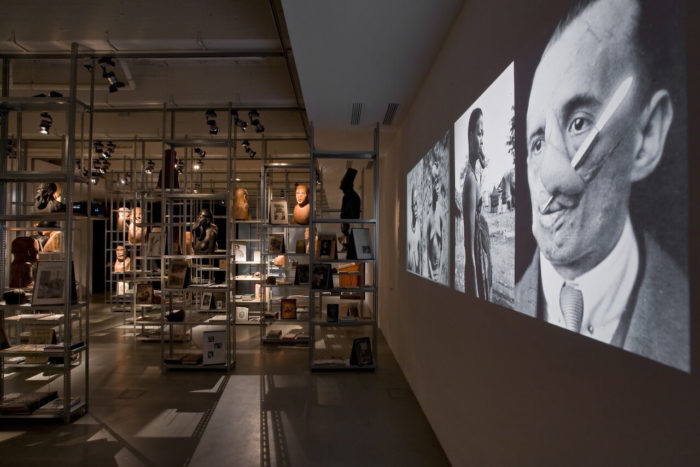
Mixed media installation.
Exhibition view dOCUMENTA 13, at Fridericianum, Kassel, 2012.
Commissioned and produced by dOCUMENTA (13) with the support and courtesy of the artist, Galleria Continua, Galerie Nagel Draxler, Galerie Krinzinger. Further support by Fondation nationale des arts graphiques et plastiques, France.
Photo: Roman März
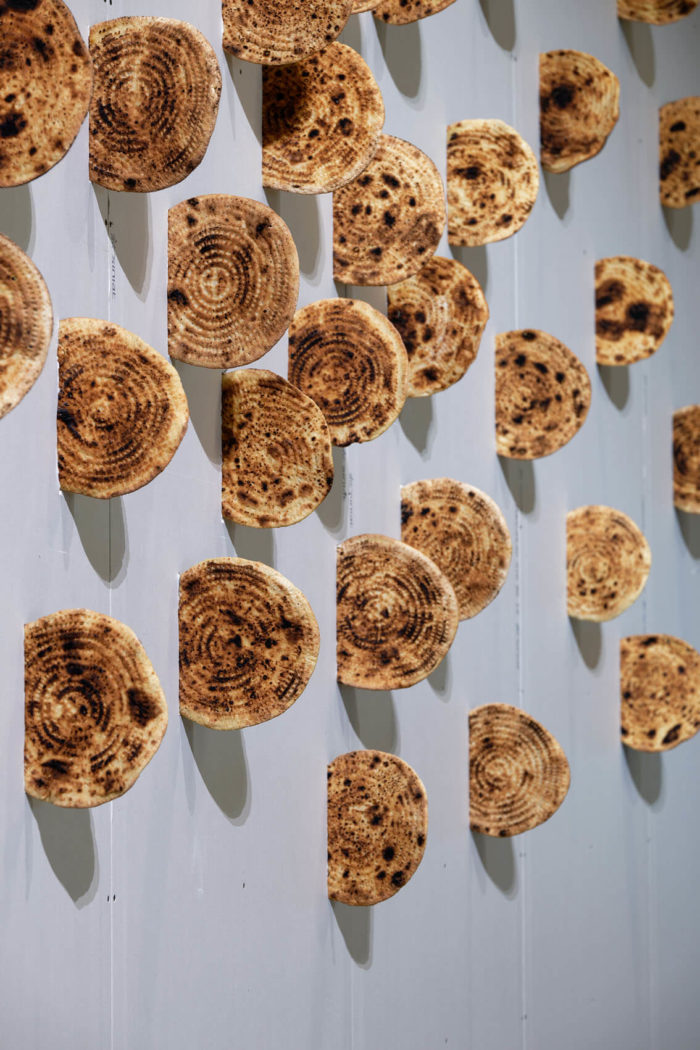
Site-specific installation; kesra bread.
Exhibition view “Les racines poussent aussi dans le béton”, MAC VAL - Musée d’art contemporain du Val-de-Marne, Vitry-sur-Seine, 2018.
Courtesy of the artist.
Photo: Aurélien Mole

Site-specific installation ; Fences, stones ; 200 x 350 cm each.
Exhibition view “Les racines poussent aussi dans le béton”, MAC VAL - Musée d’art contemporain du Val-de-Marne, Vitry-sur-Seine, 2018.
Courtesy of the artist
Photo: Aurélien Mole
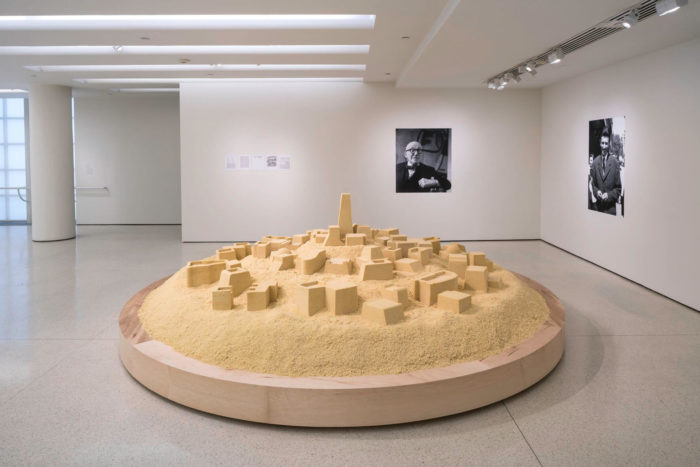
Installation, cooked couscous and black-and-white portraits of Fernand Pouillon and Le Corbusier (photocopies).
Installation view "But a Storm is blowing from Paradise: Contemporary Art of the Middle East and North Africa", Solomon R. Guggenheim Museum, New York.
Courtesy of the artist, Galerie Nagel Draxler, Tate Gallery London and Solomon R. Guggenheim Museum, New York.
Photo credit: David Heald
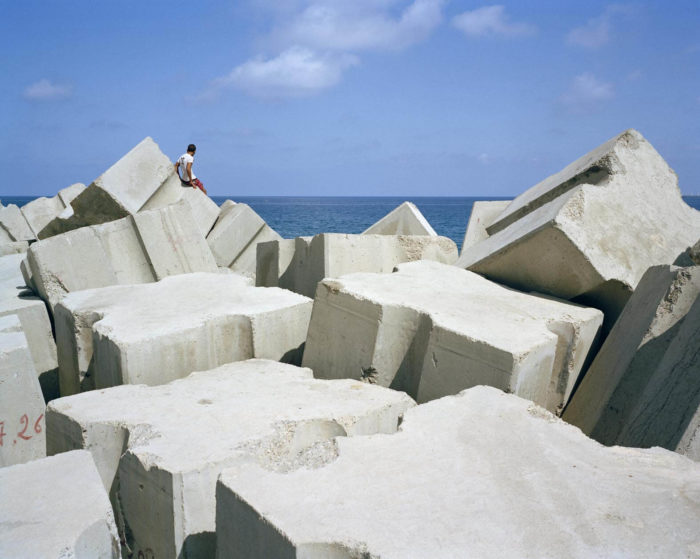
Series of silver prints
100 x 120 cm each.
Collection of Sharjah Art Foundation, Sharjah; Collection Barjeel Art Foundation, UAE; Mac/Val Musée d’Art Contemporain, Vitry-sur-Seine; Collection Société Générale; Paris-La-Défense; private collection
Courtesy of the artist and Galerie Nagel Draxler.
Photo: Kader Attia
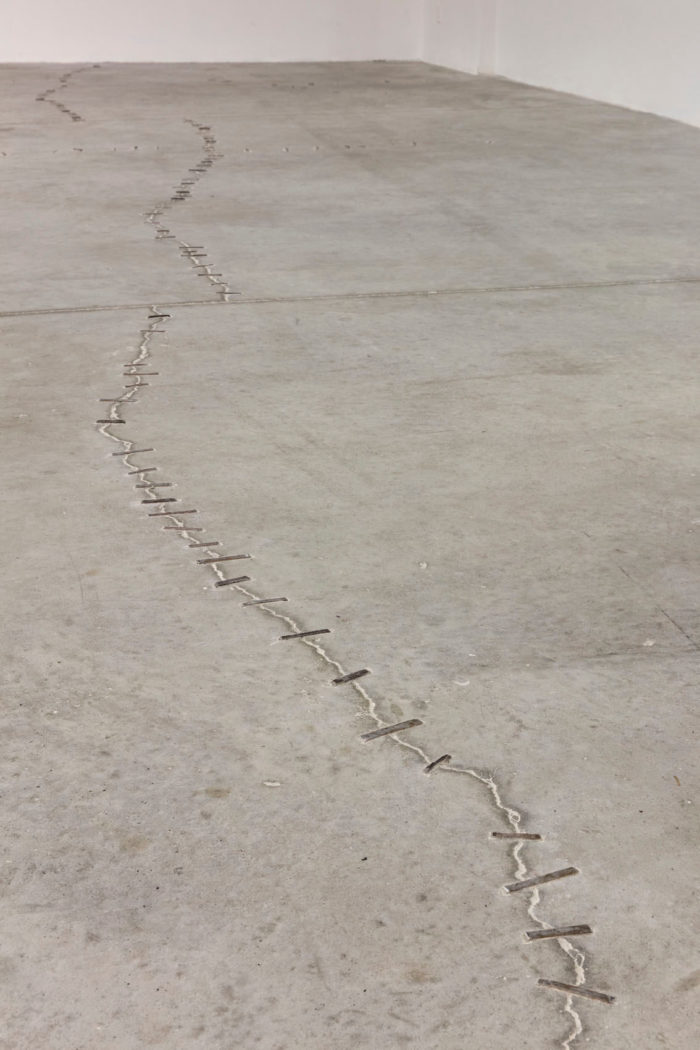
In situ sculpture. Metallic staples, concrete.
Exhibition view "The Field of Emotion", at The Power Plant, Toronto, 2018.
Courtesy of the artist .
Photo: Tony Hafkenscheid